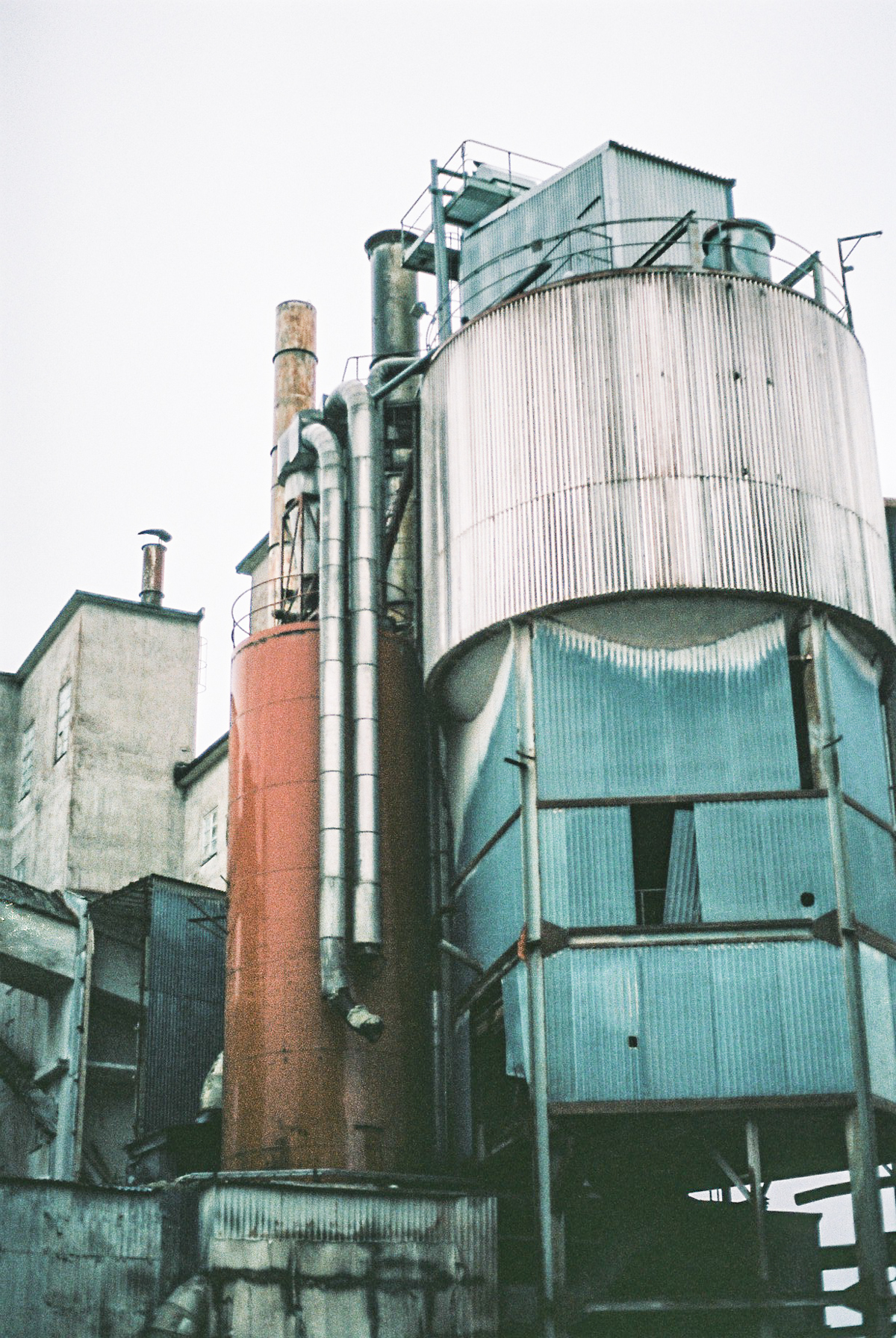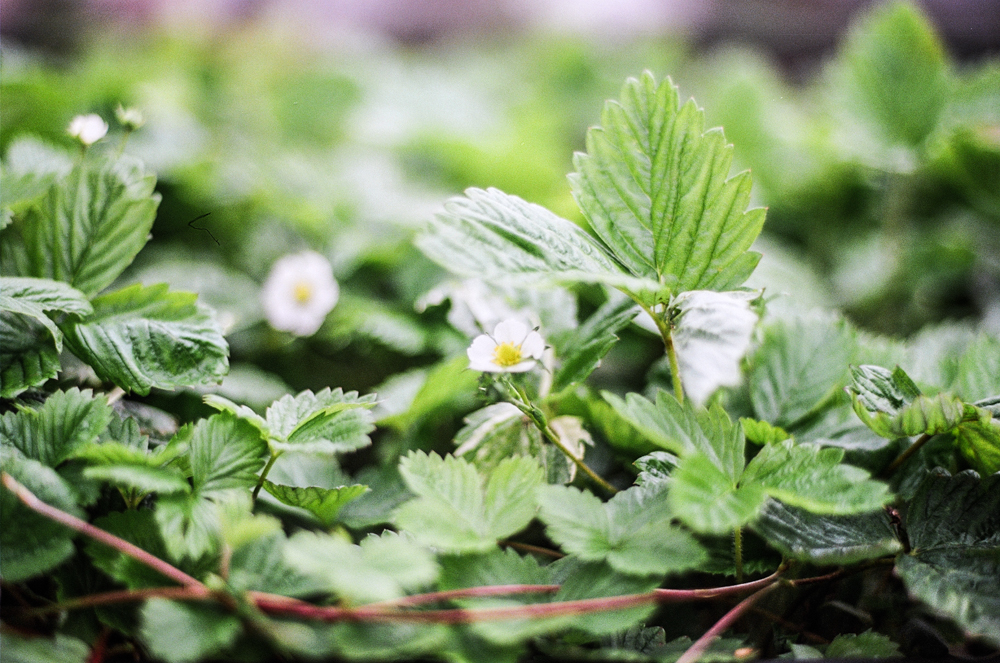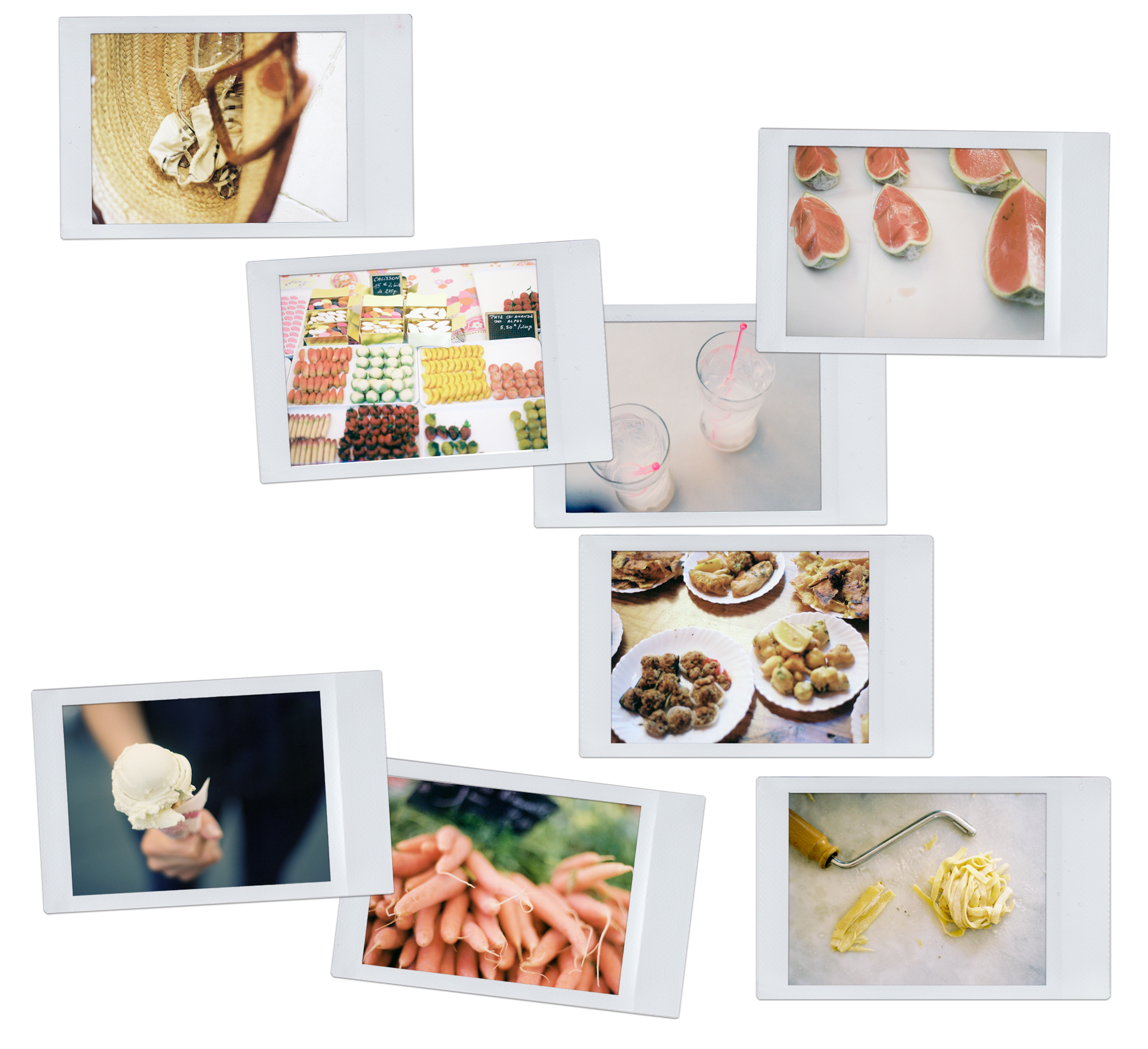
Tomorrow is the 4th of October. A date that doesn’t go unnoticed in Sweden. Yes, tomorrow is kanelbullens dag [cinnamon roll day].
I must have felt that this post – which I promised to share with you long before I even knew kanelbullar had their own day – was waiting in my drafts for a reason.
This is a recipe I first made in Åsen, the summer before last. I kneaded the dough in the evening, as we came back from a day by the lake. And by the time breakfast was ready the next morning, the buns had proofed and were ready to go in the oven for a mid-morning fika.
Later that day, I realised we’d forgotten my camera charger in Kusmark so I ended up taking some pictures using the film camera Kalle gave me.
We rushed on the road to Mora – through the forests and the bridge that goes over the lake, through the little stress I’ve come to cherish and the rails by which we always get to see a train pass by – to bring the roll to the only lab we knew of.
And because it was not fully exposed, I quickly took a few pictures of what was around me. In fact, the one below – of Kalle – is, to this day, one of my favourites.
Yes, it’s not without a certain sense of both love and reserve that I’m proud to tell you that my 79th roll of film has pictures of bullar, one of K., one of the sky, and one of flowers. The dream roll?

But let go back to that morning. When I rolled the dough and topped it with a thick layer of cinnamon butter. I don’t always say this, but salted butter really does wonder here.
Yes, that morning, is to be forever remembered. The table covered in a thick layer of white paint. And the blue chairs around it. The spitting sound of the fire in the wood stove. This is where I learnt how to roll kanelbullar.

A year has passed since then – days made of snow and walk through leafless trees, a spring that only lasted a second and a summer that is now starting to turn into autumn. Many more bullar have been rolled. At home. At the café.
And while my rolling techniques have definitely improved, the recipe has received only a few tweaks. That’s how much I’m in love with it. And I hope you will be too.

Kanelbullar, un peu comme des brioches
I love my bullar to be soft and fluffy, so instead of using a traditional recipe (which I always find slightly dry), I go for a cross between a doughnut and a brioche dough.
Although I’ve shared a recipe for kanelbullar in the past, these ones are different. They are my favourites. The ones I make at home and freeze into small plastic containers, ready to be thrown into a lunchbox or popped in the microwave for an almost-instant fika. The ones I make everyday at the café too (when I’m not off – and for the first time in a long time, I shall say: YES to the weekends).
The old ones were of the spur-of-the-moment kind. Made late, during our last night in Sweden the first time we visited. Eaten by Byske river, just a few hours before our flight back to London. They had whole wheat flour and I remember how long it took to develop the gluten by hand.
I also remember how wonderful it was to unwrap the not-so-neatly folded foil and dip them into a forever-hot cup of kokkaffe.
Making a sticky dough by hand is always a challenge; it takes time, a good scraper and hands being cleaned every so often. But trust me, I’ve done it many times and it doesn’t only produce beautiful results, it’s also wonderfully relaxing.

EDIT 5 October
After a few of you reported butter leakage, I’ve noticed I had missed a modification, which I made a few months ago: I now use a reduced amount of butter in the dough – 130g instead of 200g; a leaner dough absorbs the butter better, but I couldn’t remember why I had reduced it as I love the texture of the buns made with 200g of butter so much!
Thank you for your feedback! Also, make sure the bullar are proofed until doubled in size before baking them. It takes around 2 hours at 24°C but can take 3-4 hours if the room temperature is colder. Lots of love and sorry for the caramelised cinnamon butter 🙁
EDIT 6 October
I’ve tried both batches today, with 130g and 200g butter. While I love the texture of the buns with 200g of butter, they do leak during baking; a quick fix, if you’re after melt-in-your-mouth bullar, is to bake them in muffin paper-cases so you won’t end up with a puddle.
As for the batch with 130g of butter, they’re a bit lighter and almost no butter leak 🙂 Sending you all my cinnamon-love X
EDIT 8 December 2016
After having made this recipe daily for well over a year, I think an update is in order.
I have modified it slightly, mostly because I make it using 3.2 kg of flour, and that the flour here has a slightly higher absorption power.
Here is my updated recipe:
Kanelbullar 2.0
Kanelbullar, un peu comme des briochesEvery year, on the 4th of October, Sweden celebrates Kanelbullens dag: Cinnamon Bun Day. It feels like the perfect excuse to revisit one of my favourite recipes. These buns have been with me for over a decade now. The first version I baked in the summer of 2014 was a little more rustic.Since then, I’ve spent countless hours calculating baker’s percentages, testing variations and tweaking until I found what felt just right.What follows is my current go-to recipe (let’s call it version 2.0), followed by the 1.0 recipe for those who want to see where it all began.
Author: Fanny Zanotti
Prep Time1 hour hr 30 minutes mins
Cook Time15 minutes mins
Total Time1 day d 1 hour hr 45 minutes mins
Makes 14 buns
For the dough
- 600 g flour
- 75 g caster sugar
- 18 g fresh yeast
- 7.5 g sea salt
- 4 g hand-ground cardamom
- 225 g whole milk
- 150 g eggs
- 190 g unsalted butter
For the filling
- 190 g salted butter at room temperature
- 150 g caster sugar
- 3 tbsp ground cinnamon
For the syrup
- 75 g caster sugar
- 75 g water
In a large bowl, combine flour, sugar, yeast, salt, and cardamom. Add the eggs and milk. Mix until a dough forms.
Knead by hand for around 20 minutes, or in a stand mixer fitted with a dough-hook for about 10 minutes, until smooth, elastic, and just tacky. The dough should stretch into a thin membrane without tearing.
Add the butter gradually. By hand, work it in 3–4 additions, smearing and kneading until fully incorporated. In a mixer, add small pieces one by one. The dough will look split at first – keep going until smooth again.
Place in a large bowl, cover, and chill. Either proof 1 hour at room temperature, then refrigerate for 2 hours, or refrigerate straight away for at least 8 hours (and up to 24 hours).
The next day, line two trays with baking paper. Mix the filling ingredients until smooth.
On a lightly floured bench, roll the dough to a 30 × 60 cm rectangle, about 5–6 mm thick. Spread with cinnamon butter. Fold the dough into thirds (like a letter), giving you a rectangle about 30 × 20 cm.
Cut into 2 cm strips. Twist and tie each into a knot. Place on trays. Cover loosely and proof until doubled – around 2 hours.
Preheat oven to 200°C / fan 180°C. Brush the buns with egg wash, sprinkle with pearl sugar, and bake 12–16 minutes, until golden.
For extra shine, brush with hot syrup as soon as they come out of the oven. Cool slightly on a wire rack.
Glad kanelbullens dag!
The 1.0 recipe from my 2014 summer:
For the dough
530 g strong flour
70 g caster sugar
16 g fresh yeast
10 g sea salt
1 tsp ground cinnamon
3 eggs (150 g)
190 g whole milk
130 g to 200 g (read note/edit above) unsalted butter, at room temperature
For the cinnamon butter
250 g salted butter, at room temperature
170 g caster sugar
3 tbsp ground cinnamon
1 tsp ground cardamom
For the topping
1 egg, beaten, to glaze
a handful of pearl sugar
For the syrup
75 g caster sugar
75 g water








![]()
![]()



































